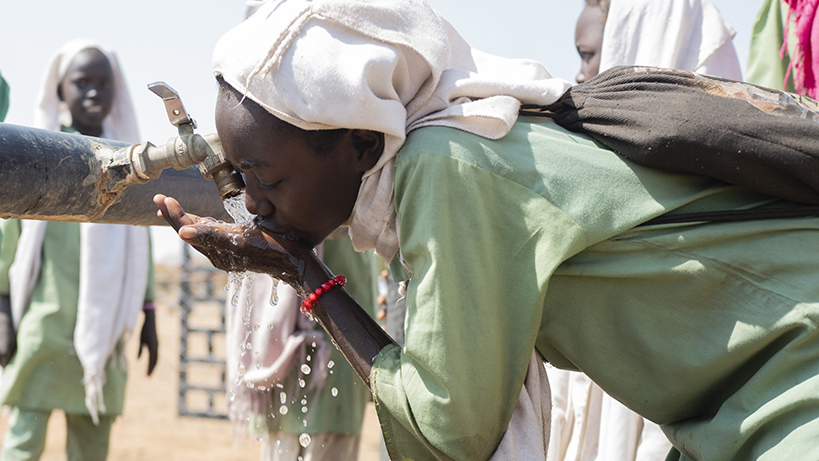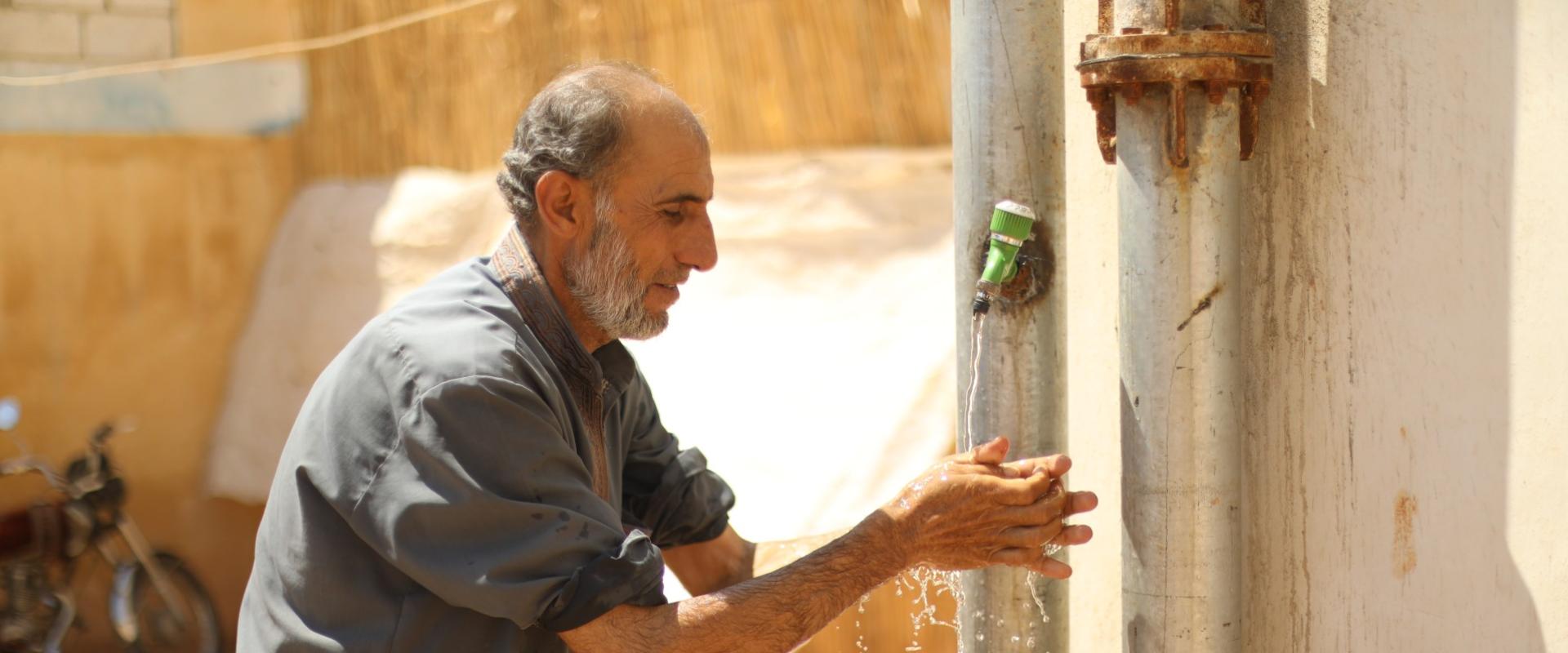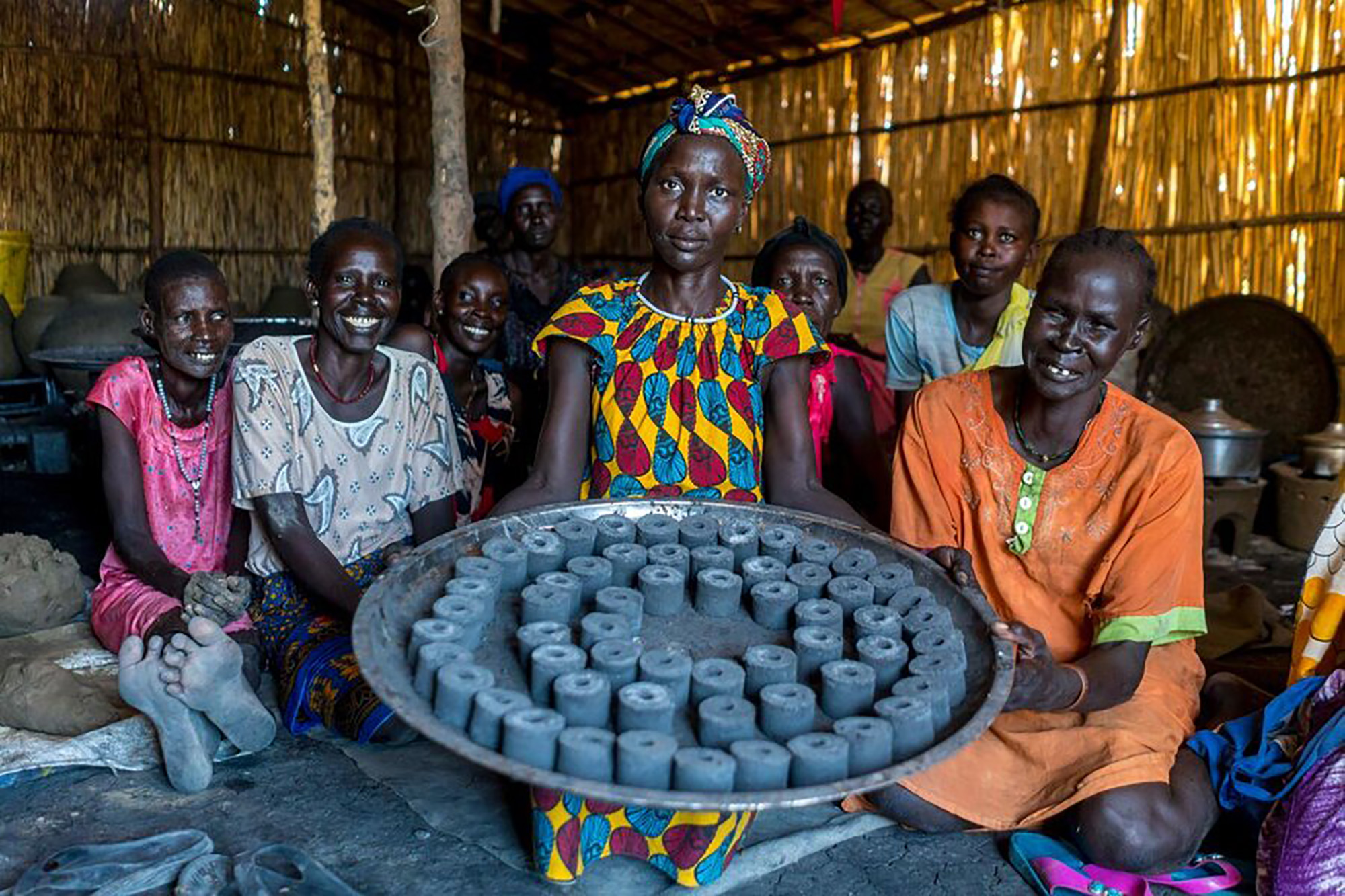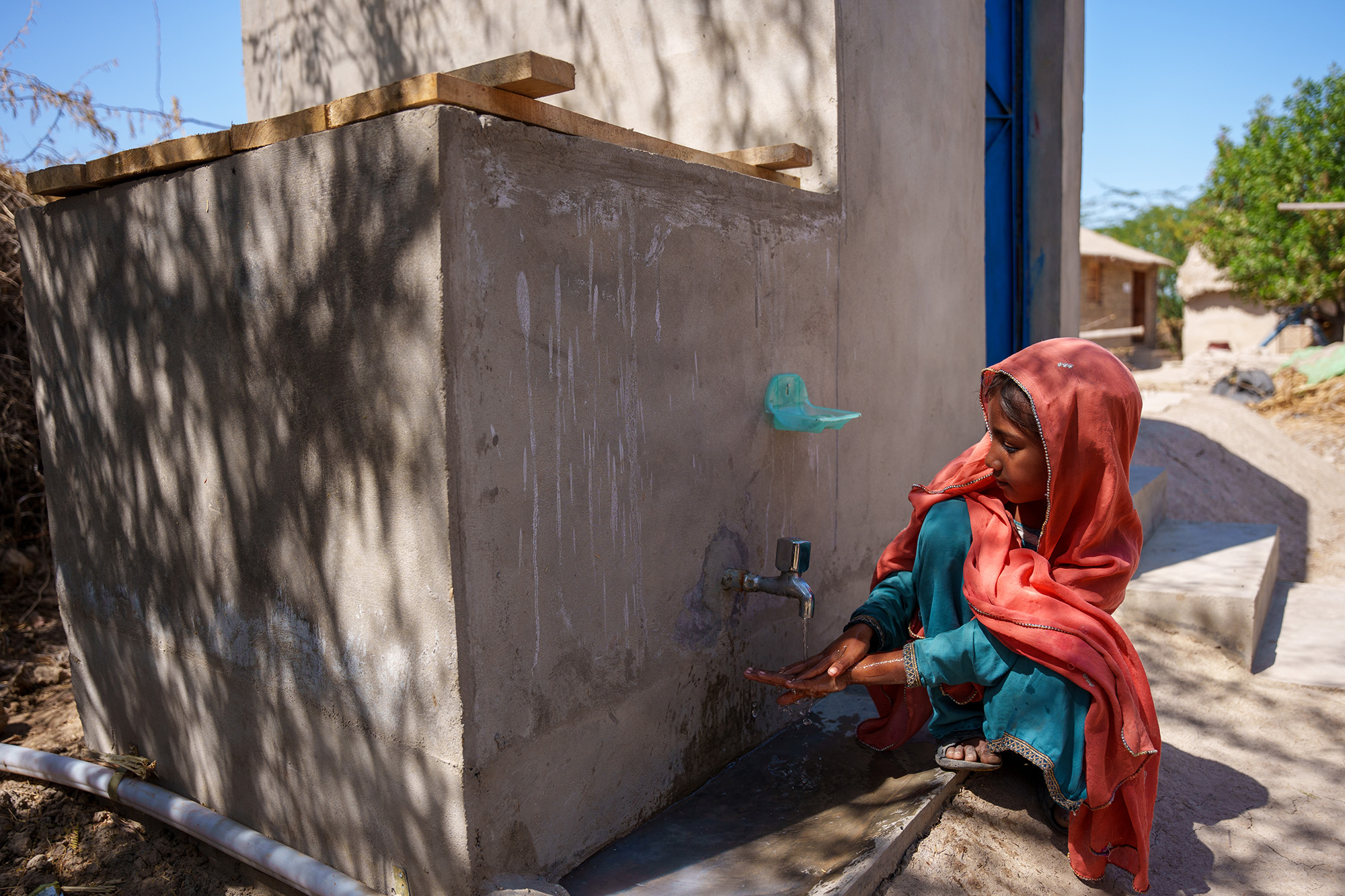Find out more in
Global Issues:
In the Mixteca region of Oaxaca, Mexico, communities face increasingly unreliable rains and severe droughts, worsened by climate change. The drought of 2022 was notably harsh, highlighting the need for innovative solutions to adapt to the changing climate. With support from the Global Environment Facility and UNDP, the local organization Alternativas y Participación Social developed a mobile solar-powered water pump to address water scarcity. This pump can be used across different wells to store and irrigate drought-resistant amaranth crops, a drought-tolerant grain and ‘superfood’ native to Mexico. The project produced 20 units for local cooperatives and provided training on their use and maintenance.
In Al-Hajar, Yemen, a new irrigation system by IOM restored water access, reviving farming and bringing hope to a drought-stricken village after years of conflict and hardship.
Glaciers, which hold around 70% of the Earth's fresh water, are vital for regulating climate, sustaining ecosystems, and supporting nearly 2 billion people who rely on glacier meltwater. Found on every continent except Australia, they have deep cultural significance for Indigenous Peoples. However, glaciers are rapidly shrinking due to climate change, causing disruptions in the water cycle, altering river currents, and increasing competition for resources. As glaciers melt, they contribute to sea-level rise and fuel extreme weather events. The release of toxins from thawing permafrost further threatens water quality. Despite these challenges, we can act by combining scientific and Indigenous knowledge to protect glaciers, improve land-use practices, and engage local communities to ensure their preservation.
At 5,100 meters above sea level, Bolivia's Huayna Potosí glacier faces thinning and retreating at an annual rate of about 24 meters. The landscape, once filled with thick blue ice, now reveals bare rock and a newly formed meltwater lake. A team of scientists ascends the glacier to install equipment that measures water accumulation in the form of snow, vital for the glacier's survival. Their work provides crucial data on the impacts of ice loss on ecosystems and communities relying on glacier water. This research aids in raising awareness among decision-makers and establishing an international monitoring network to understand how climate change affects the cryosphere. As glaciers retreat faster than expected, efforts in Bolivia focus on conserving remaining water by creating reservoirs and developing collaborative water usage arrangements to prevent future conflicts.
Glaciers are crucial for regulating the global climate and providing freshwater, essential for billions of people, animals, and plants. However, these vital resources are rapidly melting due to climate change, driven mainly by human activities since the 1800s. The United Nations has designated 2025 as the International Year of Glaciers' Preservation to highlight the importance of glaciers and ensure that those affected by glacier´s melting receive the support they need. Follow the official year’s launch (21 January, 2pm, CET) and join WMO and UNESCO to spread the word for glaciers.
In Senegal's Bousra Ndawène village, pastoralists from Senegal, Gambia, Mali, and Mauritania travel annually along a 110-km transhumance corridor, seeking fresh pastures for their livestock. Babacar Ndaw, a local farmer and breeder, helps manage resources, balancing the needs of both pastoralists and locals. The Regional Sahel Pastoralism Support Project (PRAPS) has improved infrastructure, animal health services, and water access, reducing conflicts and supporting over 350,000 pastoralists in Senegal. PRAPS aims to assist more than a million pastoralists by 2027, preserving pastoralism while ensuring sustainable resource use.
Water should be managed as a common good accessible to all, rather than as a market commodity, says the Special Rapporteur on the human rights to safe drinking water and sanitation. Pedro Arrojo-Agudo, advocates for a human rights-based approach to water management, arguing that access should not depend on an individual’s ability to pay. Arrojo-Agudo highlights water's crucial role in societal cohesion and outlines three priorities for water usage: “water for life,” essential for human dignity; “water in functions of general interest,” vital for society; and “water economy,” used for productive activities. His report offers recommendations for managing water as a common good, including principles of non-deterioration, restoration of polluted ecosystems, cost recovery for services, and cost-effectiveness.
Yemen's West Coast faces a severe water crisis, worsened by conflict and climate change, with International Organization for Migration providing vital relief.
A recent World Meteorological Organisation report reveals that 2023 marked the driest year for global rivers in over three decades, impacting water availability significantly
Paraguay’s indigenous communities are some of the most vulnerable and marginalized people in the world. UNOPS is helping them overcome the everyday challenge of access to safe drinking water.
Over the past 13 years, conflict has ravaged Northwest Syria, leaving scars on both the land and its people. In February 2023, after earthquakes dealt a further blow, crippling vital water infrastructure, residents of camps in the northwest faced prolonged water shortages due to damage sustained by a crucial elevated water tank. However, the International Organization for Migration (IOM) managed to reconstruct three elevated water tanks, restoring access to safe and clean water for over 67,500 earthquake-affected communities.
Water scarcity exacerbates conflicts globally, but sustainable management initiatives, such as IFAD-supported projects in Mongolia and Colombia, demonstrate how equitable access to water can foster peace and prosperity.
In Rubkona, South Sudan, Nyagara Maluit shows off charcoal briquettes made out of carbonized water hyacinths - an invasive species that disrupts waterways and aquatic food systems, exacerbating flooding. Turning them into sustainable fuel helps reduce deforestation. Over 70% of the world's food-insecure people are in areas where water is scarce. Climate change is worsening water-related hazards and land degradation, leading to social, gender and education inequality. The World Food Programme (WFP) responds to water-related disasters and provides emergency food and cash assistance around the world while also building resilience in communities by restoring ecosystems to improve long-term water availability and food access.
Women and girls were disproportionately affected by the devastating floods that hit Pakistan in 2022. Nisha, a seven-year-old girl from the Mirpurkhas District of Sindh, had to endure months of displacement and walk several miles every day to access clean water after her home and latrines were destroyed. Sampa, a 55-year-old widow, fell ill after drinking contaminated water during the floods. With the responsibility of caring for her ten-year-old child, she struggled to fetch water daily in the scorching heat. The efforts by the International Organization for Migration (IOM) to construct latrines, handwashing stations, and lead-line hand pumps in Nisha and Sampa's villages brought relief and improved access to clean water and hygiene services.














